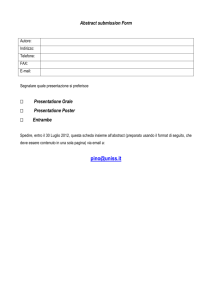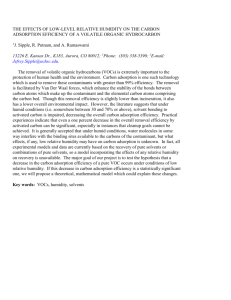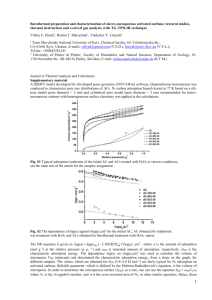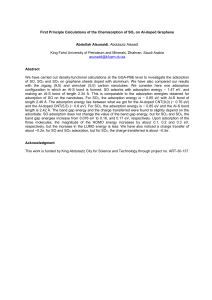COLLOID CHEMISTRY
advertisement
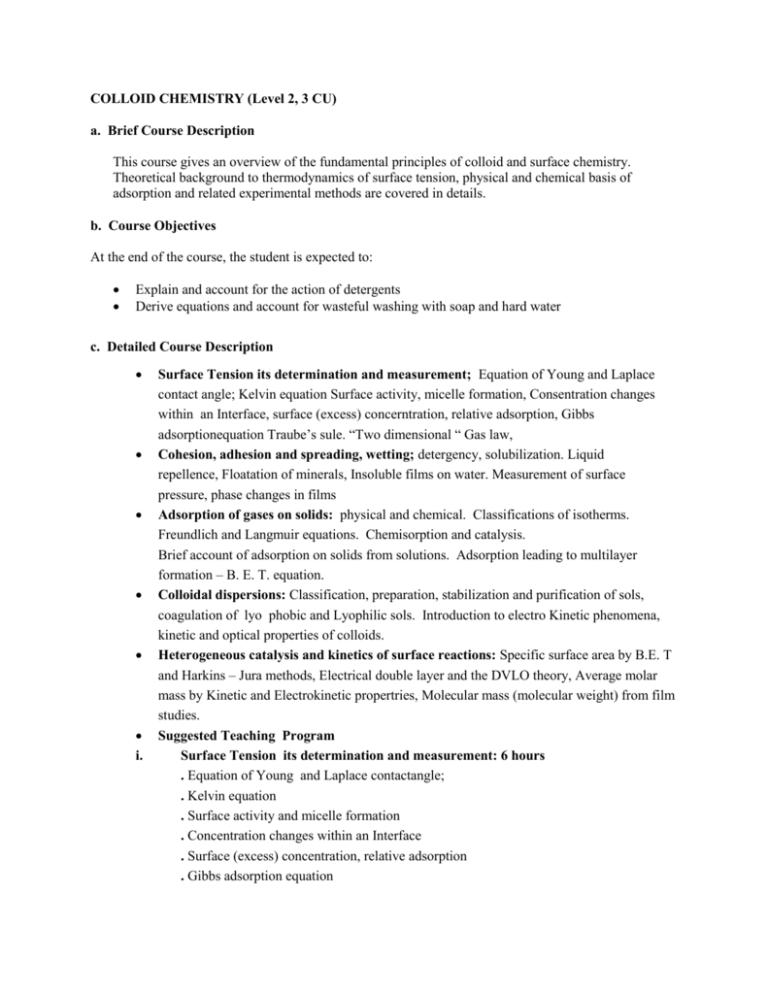
COLLOID CHEMISTRY (Level 2, 3 CU) a. Brief Course Description This course gives an overview of the fundamental principles of colloid and surface chemistry. Theoretical background to thermodynamics of surface tension, physical and chemical basis of adsorption and related experimental methods are covered in details. b. Course Objectives At the end of the course, the student is expected to: Explain and account for the action of detergents Derive equations and account for wasteful washing with soap and hard water c. Detailed Course Description i. Surface Tension its determination and measurement; Equation of Young and Laplace contact angle; Kelvin equation Surface activity, micelle formation, Consentration changes within an Interface, surface (excess) concerntration, relative adsorption, Gibbs adsorptionequation Traube’s sule. “Two dimensional “ Gas law, Cohesion, adhesion and spreading, wetting; detergency, solubilization. Liquid repellence, Floatation of minerals, Insoluble films on water. Measurement of surface pressure, phase changes in films Adsorption of gases on solids: physical and chemical. Classifications of isotherms. Freundlich and Langmuir equations. Chemisorption and catalysis. Brief account of adsorption on solids from solutions. Adsorption leading to multilayer formation – B. E. T. equation. Colloidal dispersions: Classification, preparation, stabilization and purification of sols, coagulation of lyo phobic and Lyophilic sols. Introduction to electro Kinetic phenomena, kinetic and optical properties of colloids. Heterogeneous catalysis and kinetics of surface reactions: Specific surface area by B.E. T and Harkins – Jura methods, Electrical double layer and the DVLO theory, Average molar mass by Kinetic and Electrokinetic propertries, Molecular mass (molecular weight) from film studies. Suggested Teaching Program Surface Tension its determination and measurement: 6 hours . Equation of Young and Laplace contactangle; . Kelvin equation . Surface activity and micelle formation . Concentration changes within an Interface . Surface (excess) concentration, relative adsorption . Gibbs adsorption equation . Traube’s rule. “ Two dimensional” Gas law, ii. Cohesion, adhesion and spreading, wetting – 4 hours . Detergency and solubilization . Liquid repellence . Floatation of minerals and Insoluble films on water . Measurement of surface pressure, phase changes in films iii. Adsorption of gases on solids: - 6hours . Physical and chemicaladsorptions . Classifications of isotherms . Freundlich and Langmuir equations . Chemisorption and catalysis . Adsorption leading to multilayer formation – B. E. T equation. IV Colloidal dispersisions: 6ours . Classification, preparation, stabilization and purification of sols . Coagulation of lyo phobic and lyophilic sols . Kinetic and optical properties of colloids V. Heterogeneous catalysis and kinetics of surface reactions: - 6 hours . Specific surface area by B. E. T and Harkins – Jura Metods . Electrical double layer and the DVLO theory . Average molar mass by Kinetic and Electrokinetic properties . Molecular mass (molecular weight ) from film studies. d. Mode of Delivery Lectures, practicals, assignments and tutorials Assessment Practicals, course tests and assignments (40%) and examination (60%) Note: Materials/Equipment (for the entire Chemistry programme): Balances (top-pan and analytical), ice-making machine, U.V. spectrophotometers. Nuclear magnetic resonance (NMR), atomic absorption spectrometer (AAS), Gas chromatogram/Mass spectrometer (G.C/M.S.), differential scanning calorimeter x-ray diffraction machine, bomb calorimeters, automatic viscometer, magnetic susceptibility balance, micro- analytical balance, steam distillers, water deionisers, pH meters, polarimeter, IR spectrometer, high pressure liquid chromatograph (HPLC), high temperature furnace, refrigerators, Bunsen burners, assorted glassware, assorted chemicals and solvents.






